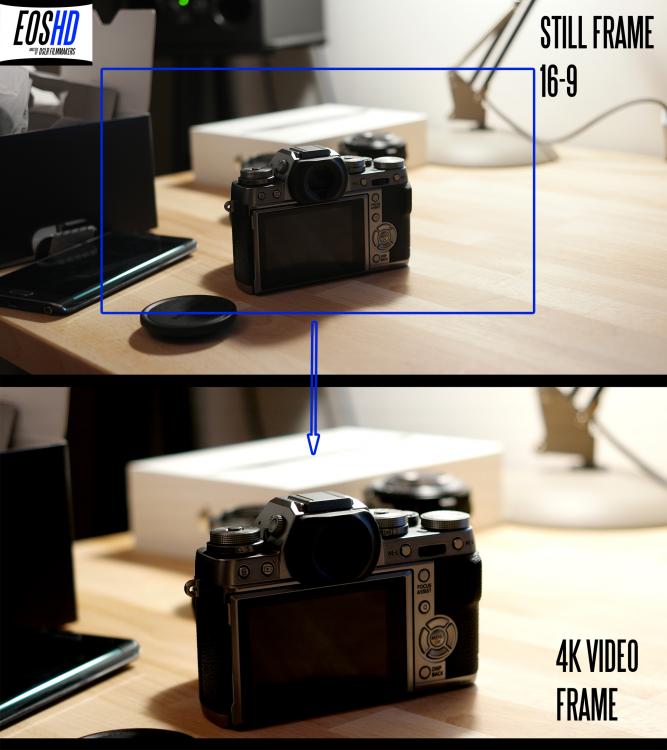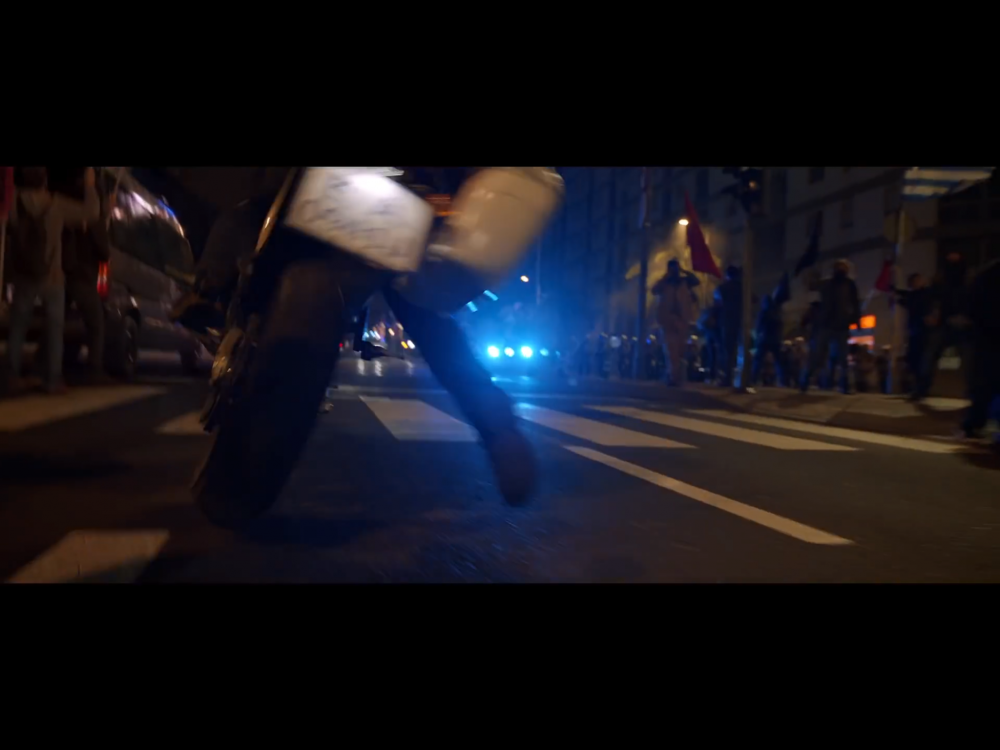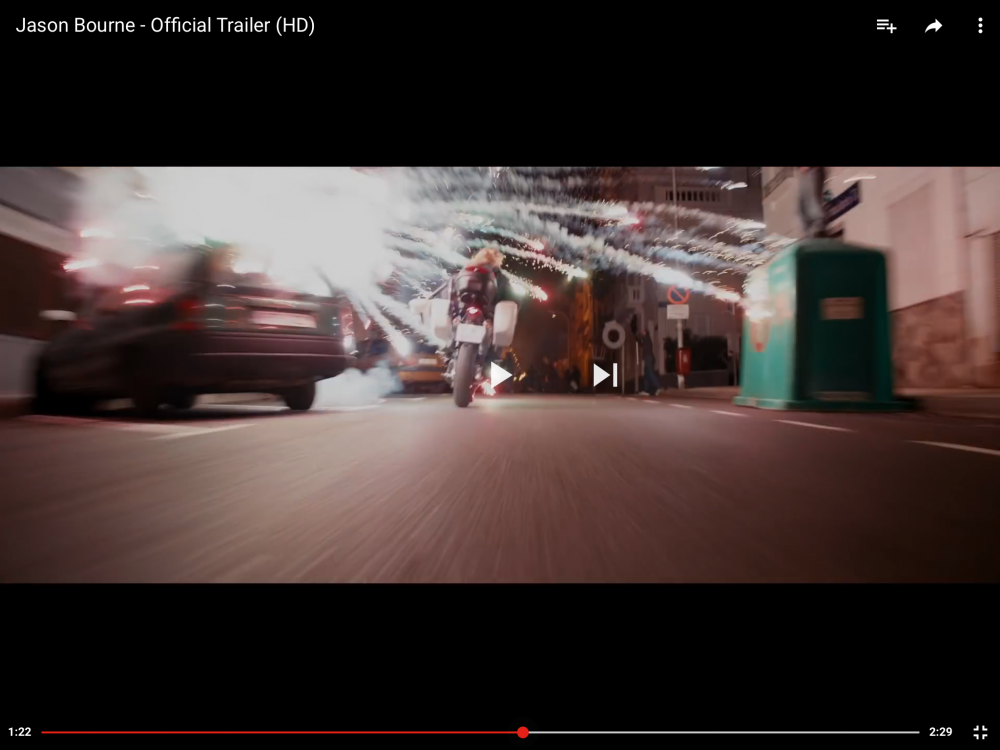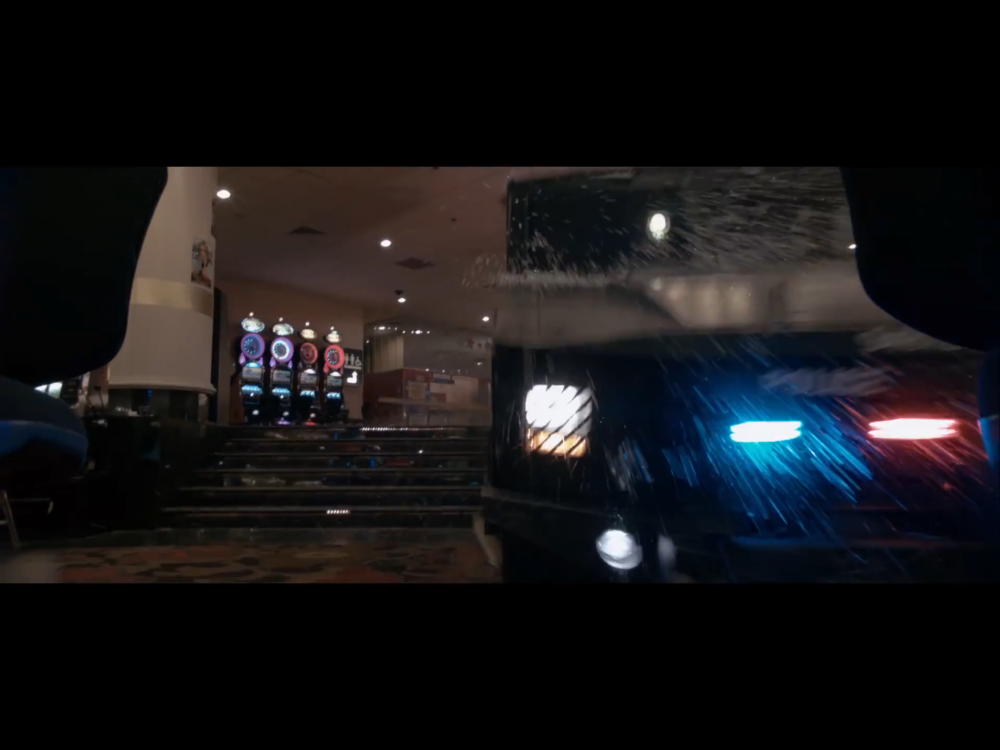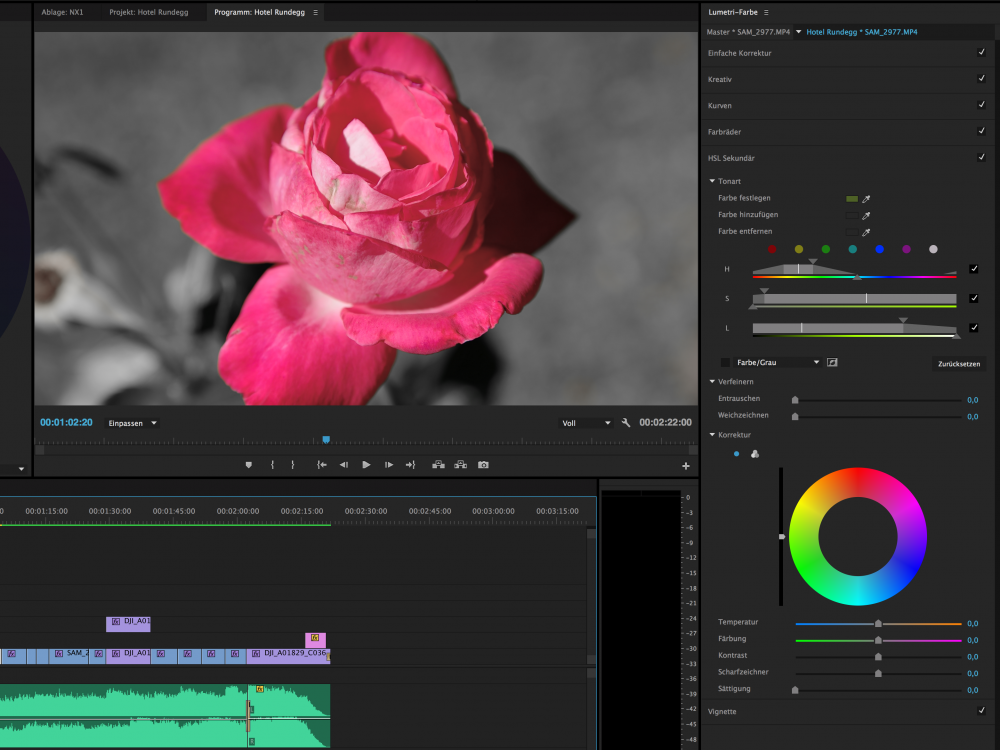Leaderboard
Popular Content
Showing content with the highest reputation on 08/05/2016 in all areas
-
well I went to see Bourne last weekend and the cuts are so fast and the camera is moving so much that you have no idea what camera is what on the big screen , there are no shots that jump out as being bad or not fitting with the previous Alexa footage , it works they did a good job , now on most major films they are using what ever camera suits each shot / set up...... Bond Spectre was the same Film and Digital combined and multiple camera and formats Anamorphic , Spherical Alexa 65 and 35 all made it into Spectre3 points
-
I went to see the film last weekend, as I'm a BIG BOURNE fan I was very pleased with it , nice to see they are still using the TLS Nikon 80-200 that I keep banging on about - Nikons finest hour! their best lens . Barry Ackroyd (one of my Favourite DPs and President of the BSC) takes over from DP Oliver Wood who shot the first 3 Bourne fims , Barry keeps the same style , all hand held Greengrass wobblecam ! the Athens sequence is intense!! this months American Cinematographer magazine explains it all in great detail -Barry Ackroyd tells how it was made with Igor Meglic second unit DP. quote: Second-unit cinematographer Igor Meglic, ZFS — whose history with Ackroyd began on the 2012 crime thriller Contraband — added other cameras beyond the Alexa. “The reason I usually have to go to different cameras is because we either need a lot of them or they’re in harm’s way,” says Meglic. “Once you start to bring in six or eight additional cameras, it’s a cost thing.” Red Epic Dragon units were used mainly for plate photography in vehicles, with Canon’s Cinema EOS C500 used for other vehicle and handheld work. For applications requiring an ultralightweight camera, such as helmet mounting, Meglic opted for Blackmagic Design’s Pocket Cinema Camera fitted with Kowa 8.5mm glass. “It’s a pretty amazing little camera,” he notes. “Weightwise, it was little more than an iPhone!” The 2nd unit often recorded internally — particularly in the case of the XT and Dragon — while external Codex recorders were sometimes used for the Dragon, C500 and Pocket Cinema Camera. “When needed, we did it both ways,” says Meglic. “We did vibration tests, [and] I was a little nervous, but it turned out we never had a problem.” Vegas car chase, up to 28 camera bodies were available for use — although that many never rolled simultaneously — predominantly fitted with the same kind of lenses used by the main unit. Meglic notes, “A couple of times [during the London portion of the shoot] we did ask if we could borrow a lens or two, and they were always very nice about that!” Given the chosen style, it’s perhaps no surprise that Ackroyd describes himself as “a zoom person.” He singles out the “beautiful” Angenieux Optimo 24-290mm (T2.8) zoom, noting, “It’s like my eye, my brain. When something takes your interest from across the street, you don’t see it in the same way as when you’re close to something. You can exclude things and concentrate.” The extensive lens package also included Angenieux’s Optimo 15-40mm (T2.6) zoom; Fujinon’s 19-90mm (T2.9) Cabrio zoom; True Lens Services’ 80- 200mm (T2.8) Morpheus, a rehoused Nikon stills zoom; and Panavision’s Primo 135-420mm (T2.8) zoom. The 35mm-format prime-lens package comprised Arri/Zeiss Ultra Primes ranging from 20mm up to 180mm (all T1.9) as well as Zeiss Super Speeds from 18mm up to 85mm (all T1.3). The production’s Super 16mm cameras were paired with Canon 8-64mm (T2.4) and 11-165mm (T2.5) zooms. Any concerns about matching the various cameras and lenses were subordinate to ease of handling, Ackroyd says. “I’ve never been one to get too hung up on the technical side of what the lens may or may not do. Of course, if you were making a movie that was highly glossy and intentionally stylized, you’d have to pay more attention to that.” looks like they used Canons on Vehicles and BMs so its going to be hard to tell which is which ...3 points
-
Honestly if you're a still shooter Samsung NX system is the wrong choice... I think the nx1 is an astoundingly good stills camera with good lens. I shoot everything raw. The detail and the gradeability always amaze me.3 points
-
I disagree, dude. I've got a pretty thriving business that's equal parts stills and video and the NX1 and NX500 do everything I need and more stills-wise. Fantastic dynamic range, high mp for great detail, wonderful adaptability for vintage lenses... Honestly what more do you need? This new speedbooster will only make things better, I can't wait to see how different some of my lenses look wider and a stop faster.3 points
-
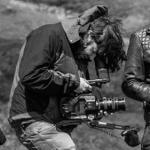
DJI X5R - First Impressions
Marco Bentz and one other reacted to Oliver Daniel for a topic
I've had some time to play with the DJI X5R and for the first time, put it knee deep into a professional shoot with lots of flashy stage lighting (the video is a high end "fake live" shoot for an international events band. So far, using this device is a very slow burner and I can't really make a judgement yet, but here's some things I've found. There are many negatives at first, however I'm trying to solve them and see what difference it makes in the long run. What I do know is that this combination has a lot of potential, however this camera needs quiet a few firmware updates to get there. ProRes on board would be great! I feel DJI didn't test this camera enough before release. Had to deal with lots of annoying issues. Positives Footage in 4k and HD raw an be spectacular - very clean and detailed (but only if you shoot and light skilfully!). Very intuitive to use, combining the Osmo and Inspire 1. DJI Go app responds and works very nicely. Stabilisation and handling is very different to a normal 3-axis gimbal like the Ronin, however getting to know it's behaviour can yield some awesome moves. Walking bounce can be eliminated if you know how to "do the walk". Some shooters online are just not trying at all, letting the vertical movement bounce everywhere. Walk as flat a possible, all is good. Unit is small and light - no balancing required. No big bulky cases. Nice and portable. Low light is better than expected. GH4 level really. Battery extender is very useful, if you need long periods. (lasts about 2 hours 45 mins on constant with Inspire 1 TB48). Proxy files look decent in good light. Handy to have when raw isn't an option. 1080p is very sharp. 4k is ridiculous. The gimbal lock on the Osmo is sweet. You can pull off some crazy dolly moves and pans. Negatives Autofocus on the app isn't great. Takes two tries and it MUST be on something of high contrast to work well. Aperture resets overtime you switch off the device. Bit annoying. As phone is a monitor, you need a USB power bank. I strapped one on the back of the mobile phone holder. Phone (iPhone) lasts 45 mins otherwise. iPhone monitor image breaks up sometimes and lags quite a bit. Annoying if you are trying to do a smooth movement or judge focus/exposure. Changing settings such as aperture can be fiddly. It just won't let you choose what you want sometimes. Sometimes the unit goes into sleep mode a few seconds after you switch it on. SSD fan noise is like a shit hoover. The internal audio with the cheap mic add-on is absolutely garbage. It's hard to hold the X5R on the Osmo with one hand, while using the thumb controller. Two hands is better. The SSD card reader is shockingly temperamental with Mac. Sometimes it doesn't mount at all. Have to use USB keyboard input on Mac. Doesn't work on the normal USB inputs. DJI Cinelight is rubbish. Transcoding is very slow and the tweaking options are very basic. Memory fills very quickly. HD is about 2 hours per SSD, where 4k is about 25 mins per SSD. For long shoots , another SSD is almost essential. Just very very pricey. Focusing can be difficult on apertures between f1.7 and f5.6 using the app. Seems like the expensive follow focus would be ideal (not on your wallet). Normal OSMO batteries last about 7 minutes. D-LOG on proxy files is a HUGE HUGE no-no!! It looks and grades horribly on the teeny 60mbps codec. That's enough for now! More soon...... with images!!2 points -

Samsung NX Speed Booster
iamoui and one other reacted to Marco Tecno for a topic
Yep, they are probably incompetent.2 points -
Multiple BMMCC & BMPCC used on new Bourne sequel
Hans Punk and one other reacted to Bioskop.Inc for a topic
IMHO anything promoting the BMPCC [or BMMCC] over 4K 8-bit cameras is a good thing. I know no camera is perfect (especially in the prosumer market), but in my experience the Pocket was the image & codec i'd been longing for ever since I had to take a hit & demote myself to using H264. It's not 4K, but when I saw the image quality and started working with ProRes (let alone RAW) I knew I'd finally come home - no more wasting time on dreaming about which camera to own next. Some people might say it's only 1080p, but with an anmorphic lens it ends up being way over the standard Cinema DCP 2K (2.39) & you end up squeezing the image down rather than up. I still have my 60d for taking pictures & that's why I bought a hybrid in the first place - the video mode was always going to get replaced with something better sooner or later and now I have the best of both worlds. As far as marketing/advertising etc., of course one must always beware with these capitalists! But when they bring people's attention to something good, i'm more forgiving - at least for the time being.2 points -

Samsung NX Speed Booster
SMGJohn and one other reacted to Marco Tecno for a topic
I get far better pics with nx1 and s lenses than from most ff cameras I use(d). You just have to shoot raw and know how to pp your pics. The latitude is amazing. I now shoot almost always at iso 100 and pull in post. Here the nx1 destroys any canon and is competitive with d5 and a7r. Besides af is the best I ever used, on par or better than d4 (again, you must know how to use it) and for sure better than any sony, including the a6300, which compared to nx1 is a toy camera imo.2 points -
Canon 1Dc $4,999
kaylee and one other reacted to Luke Mason for a topic
Filming without permission is also a breeze with 1DC...2 points -

Samsung NX Speed Booster
SMGJohn and one other reacted to lucabutera for a topic
2 points -
If you're a premiere user, the new lumetri color panel offers a quick and easy way to nail this kind of look, you can just click the little color buttons on the wheel and boost what you want, and pull everything else down to full desaturation. Sometimes it works better than others though, for example on the two examples posted there might be red in the skintones that sticks around a bit. It is very fast and simple to use though.2 points
-

Multiple BMMCC & BMPCC used on new Bourne sequel
Michael Coffee and one other reacted to Hans Punk for a topic
Quite noticeable desaturation/colour tone shift compared with neighbouring shots...micro shake of smaller camera body in motion...apparent big lift in contrast compared with other footage....has a 'smeary 360 degree shutter look'. These are almost certainly the pocket/micro shots, there are probably a few more that I'm not spotting but those are the ones that stick out as a 'sore thumb' to my eyes. like I said earlier, if it makes up part of an engaging sequence that by which point the audience is along for the ride (often literally) - then nobody should give a f**k if they intercut technically mis-matched footage. If it works in context, it works. But my observation is that when a DP says that they are dealing with great footage in post, and imply that these cameras cut in seamlessly with A&B cameras are either a bit blind/ misquoted/ or has concesiously decided that any mismatch will not take the audience out of the experience when cut together (which I agree it should not matter...as long as the shot is cool enough). It is possible to grade these tiny cameras to intercut seamlessly, but unfortunalty this DP (and many others on other recent films) seemingly decide to use them as glorified GoPro's - often revealing the slight shortcomings of image quality when exposed to very dynamic lighting and motion. The shots in the trailer I noticed looked like a saturation and slight contrast punch would have been of benefit to match the neighbouring shots. Feels like they left those shots pretty flat - to retain as much shadow detail as possible, yet forgetting that in the flow of a sequence, any contrast or saturation jump can sometimes look way worse than crushing any blacks. Ironically, a 70year old Eymo wind-up 35mm camera (which I keep banging on about) - would have probably performed way better in terms of being able to match any surrounding shots, as the nature of film can still handle highlight roll off and dynamic exposure manipulation with a lot more grace than most of the highest end digital cinema cameras.2 points -
I had the Pocket and now the Micro. It's fantastic, I don't really need the 4K, but it is a "cinema" camera. You need time to set up it, time to swap batteries etc... and for rush - or low budget / no budget - gigs is not the best candidate. I find the GH4 (and now the G7) far more easy to manage, they share the same lens park and I use 90% of the time the Panasonic instead of the Micro. Of course I love the internal Micro's ProRes, it is just awesome and quite easy to grade in post while with Panasonic you have to nail 85% of the look in camera, because the V-Log, even recorded in the BM Video Assist is not something I use on the GH4. In my small experience LOG needs 10 bits and GH4 (or G7) are not that better recorded in ProRes, the codec is great in "Natural" setting, recorded internally and I use them in that way.1 point
-
1 point
-
1 point
-
Questions on Single Colors
sanveer reacted to Bioskop.Inc for a topic
I used that technique quite a few years ago using FCP7 & the thing is you're keeping the colour of the Dress (for example) & then desaturating the rest of the footage, so you should be fine. If you look at the example you gave of the little girl, it doesn't look perfect - i suppose there is a different technique used with film stock. The thing with H264 footage is, you can do one or two things, but as soon as you start doing major CC etc. it will fall apart. So nail the footage that you take (exposure, colour etc.) as close as you can, so you don't have to bother altering too much in post. Those books are amazing, they cover everything you need to know about CC & grading - no trick or technique is left out. Really worth the money & you'll never need to buy another over priced plug-in again. The only thing i've bought since is Film Convert - I only use that as a final adjustment layer for the roll off effect on highlights/blacks, applying only their standard setting. If i'm really in a hurry, I'll use the Alexa preset with BM footage, since I hate their BM preset - horrible, really horrible. I always use the rule of thumb of nailing everything as close as you can get in-camera, as it saves so much time in post. The saying that you can always fix it in post, is just another way of saying you can't shoot properly.1 point -
Questions on Single Colors
sanveer reacted to Bioskop.Inc for a topic
For the best results, it should be done in post. You grey out the clothes or whatever & then reverse the image, so you end up keeping the colour of the object & everything else is B&W - colour keying, i think that's what it is called. Effects done by a camera are always a bad compromise - it won't look great. If you're not good at CC'ing or want to learn, the best book/s out there is by "Alexis Van Hurkman - Color Correction Handbook" and the companion book is "Look Book Creative Grading Techniques". If you get both you are absolutely set to go - the books are easy to understand & you'll realise it's a lot easier and quicker to do things than you think (you do things once & then save the template in your NLE).1 point -
I own both GH4 and G7: in 4K the G7 is better especially in low light, but of course also the GH4 is a little monster. I also own a BM Micro Cinema, great cinematic 1080 camera, but it is slower to use, for every setting you have to enter in the menu while with G7 and GH4 you can set WB, shutter speed, aperture etc... from a dedicated button. If you are in rush G7 and GH4 are a better choice. If you think to GH4 I would buy 2 G71 point
-
One Point Color under Creative Control mode see pag 84 of the user manual. https://eww.pavc.panasonic.co.jp/dscoi/DMC-GX80/EG_EC_EF_EB/guideENG.pdf GH4 has it as well, never used it so can't tell how well it works.1 point
-
So just got my XC10, and it definitely has a cool s16 aesthetic. IS is probably a bit better than olympus E-M1 IBIS but need to do some further tests, and onboard audio is a lot better than GH4 that it replaced.1 point
-
Canon 1Dc $4,999
Dave Maze reacted to Luke Mason for a topic
Yes, I've traveled with crew that has BMCC, C300, when going through X-ray check they almost always get asked to be taken out of the bag and inspected, never happens to 1DC because they've probably seen millions of DSLRs.1 point -

Advice Needed - upgrading camera
Matias Goinheix reacted to IronFilm for a topic
Check out the thread Andy Lee made. He shot a feature film using SIX of the G7 cameras.1 point -
Kool-Aid glass...drank. Complete.1 point
-

Making Movies is Hard?
sanveer reacted to fuzzynormal for a topic
Yeah, I'm totally guilty on some of that stuff myself...1 point -
The last month I've done two international trips with the 1DC and I'll say this camera is fantastic for that type of work. A real ninja camera. The DSLR form factor makes going through customs a breeze.1 point
-
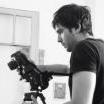
Advice Needed - upgrading camera
IronFilm reacted to Matias Goinheix for a topic
Two votes for the G7. I have to watch some videos about it because I don't know much to be honest.1 point -
Do you need the low light on the a7s? I would consider a g7 + speed booster xl. Itl be cheaper, give you a great image and mean you can buy a couple of nicer lenses, replace those kit zooms!1 point
-
I think the G7 had a filter that did it. And I'm pretty sure it worked in video. But don't quote me, I never tried it.1 point
-

Multiple BMMCC & BMPCC used on new Bourne sequel
Michael Coffee reacted to Hans Punk for a topic
Think my eyes a bit too sensitive to it...since I work a bit in post production, and have had to deal with matching/fixing shots similar to this in the past. I'm sure these shots work when viewed in the context of the film, even when I notice these things at a screening I often don't care. But I'd love DP's to not defaulting to 'disposable' digital cameras (as they sometimes regard them) without first considering older compact film cameras (that are now dirt cheap) - that will often deliver better options in post for matching to the main unit cameras. The shots from these crazy stunt/crash/pyro shots are often the ones put front and centre in a movie trailer, so I think it's worth the extra effort to consider quality over convenience IMHO.1 point -
I just realized that if an electronic adapter could be made this will open the NX mount to all lenses made for Canon and Niknon with AF as well (maybe even OIS?). For video a speed booster is more exciting though.1 point
-

Little guess the camera
elgabogomez reacted to Michael Coffee for a topic
Hi, just guessed because I saw you had posted about the a6300, and it didn't look obviously Canon/Panny... I thought it looked great, saw some fs5 footage the other day that I'm looking for now, it seems when these Sony's are done right, you can get a wonderful look that is somehow very neutral, yet saturated looking..1 point -
Hey, why don´t you post it in the classic EOSHD GuessTheCamera fashion in a separate thread. It´s totally worth it! Hope your camera history won´t be spoiling the guessing pleasure though:)1 point
-
Canon 1Dc $4,999
IronFilm reacted to Tiago Rosa-Rosso for a topic
Maybe. But some people like the form factor of a DSLR for video. It's smaller, less intimidating, it's built like a tank, it's weather sealed, it's full frame, you can use it around your neck, and yes sometimes you can take a photo with it. You can't carry your c300 around your neck and look casual.1 point -
Wow.. I watched the trailer and the short in broad daylight, on my phone, and was still screaming "oh shit!"1 point
-
Sandberg recently gave a 2 hour interview on Indie Film Academy's Podcast. A great interview where he goes in depth of his beginnings in filmmaking and how he rose to direct the feature film version of his award winning short that went viral overnight. He also gives a crap ton of BTS info... Including how he snuck off during break and shot some flashbacks with the BMPCC. http://www.indiefilmacademy.com/ifa-49-lights-out-director-david-f-sandberg/1 point
-
I generally agree with you on this but I don't quite understand where did you see such claims in this thread or in the linked article. Some quotes from the article - reasons why DP chose BMs (image quality mattered to him it seems): “One of the most important things when shooting action scenes for any movie is to stay consistent with the established look of the movie, so once you transition to an action scene, there’s no difference to the eye, and it feels like the same scene and style,” explained Meglic. “On ‘Bourne,’ it was especially important because of the particular visceral documentary style of the film.” “We chose the Micro Cinema Cameras and Pocket Cinema Cameras because of the combination of size and performance they delivered, which in turn helped us match the look and style of the film. I haven’t found another camera that will deliver on those two things: being as light as they are while still delivering the image quality needed to blend in with the A cameras. I always try to extract as much as I can from a camera, so they are dealing with good footage in post, and the dynamic range on both cameras was very good.”1 point
-

Samsung NX Speed Booster
gatopardo reacted to lucabutera for a topic
Samsung nx100 + NX/EF SB + CANON 50MM 1.8 II I CAN DO IT!1 point -
I really think it would be smart for BMD to make a series of real world tutorials and BTS from movie sets to show us what can be done with those great little cameras, how the pros rig them, what lenses they use etc. Probably most of us don't have access to big productions and sometimes you can research online until judgement day but simply there isn't any info out there.1 point


